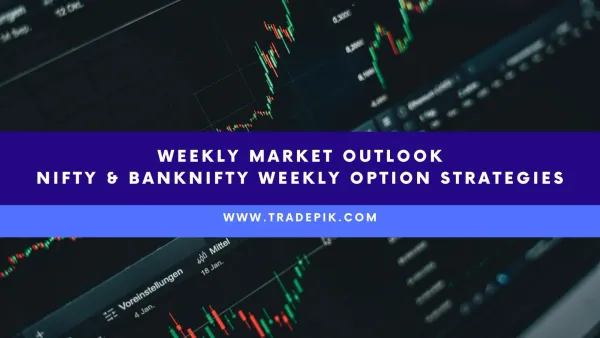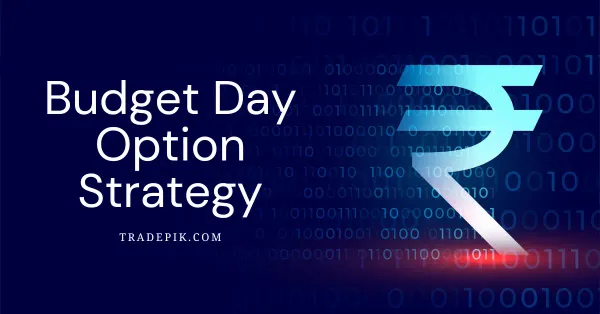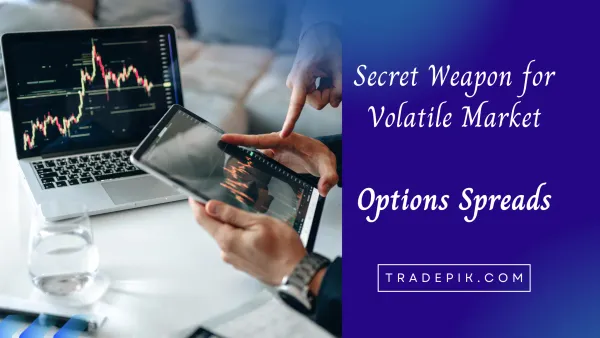3 Things I've Learned in My 12 Years of Trading Career
Discover the invaluable insights gained from 12 years of trading experience as this article unveils the top 3 lessons learned along the way.

Trading can be a challenging endeavor, but it is also packed with valuable lessons and insights that can shape one's financial future. Throughout my 12 years of trading career, I have encountered numerous highs and lows, made profitable trades, and experienced heartbreaking losses. Reflecting on this journey, I want to share three key lessons that have been instrumental in my growth as a trader and investor. These lessons have not only improved my understanding of the market but have also shaped my overall approach to trading. So, let's dive in and explore the wisdom I gained along the way.
The Beginning of My Trading Journey
Embarking on my trading journey, I quickly realized the utmost importance of financial education. While many see trading as a quick way to make money, without adequate knowledge, success becomes elusive. It is like navigating uncharted waters blindfolded. Therefore, I dedicated significant time to studying the intricacies of trading, honing my skills, and absorbing knowledge from renowned traders and financial experts.
As I delved deeper into the world of trading, I discovered that financial education forms the foundation of any successful trader. Understanding various financial concepts, such as fundamental and technical analysis, risk management, and market psychology, provides a solid framework for decision-making. The more I learned, the more confident and informed I became in my trading decisions.
The Importance of Financial Education
Financial education is not just about learning how to read charts or analyze market trends. It encompasses a wide range of topics that are crucial for navigating the complex world of trading. One aspect that I found particularly enlightening was understanding the role of economic indicators in shaping market movements. By keeping a close eye on key economic data releases, I was able to anticipate market reactions and make more informed trading decisions.
Another vital aspect of financial education is risk management. Learning how to effectively manage risk is essential for preserving capital and avoiding catastrophic losses. Through my studies, I discovered various risk management techniques, such as setting stop-loss orders and diversifying my portfolio, which helped me mitigate potential losses and protect my trading capital.
Furthermore, financial education also encompasses market psychology. Understanding the emotions and behaviors that drive market participants can provide valuable insights into market trends and potential reversals. By studying market psychology, I was able to identify patterns and trends that were not immediately apparent, giving me a competitive edge in my trading endeavors.
My First Trading Experience
My initial foray into trading was filled with excitement and anxiety. Armed with the knowledge I acquired through my financial education, I approached my first trades with a level-headed mindset. I understood the importance of conducting thorough research and analysis before executing any trades.
Although I encountered challenges and made mistakes during my early trading days, these experiences helped me grow and refine my trading strategies. I learned not to be discouraged by setbacks but to embrace them as valuable learning opportunities. Each trade taught me something new, whether it was about market dynamics, risk management, or my own emotional responses to market fluctuations.
One of the most valuable lessons I learned from my first trading experience was the importance of discipline and patience. Trading requires a calm and rational approach, rather than succumbing to impulsive decisions driven by fear or greed. By sticking to my trading plan and exercising patience, I was able to avoid impulsive trades and make more calculated decisions based on thorough analysis.
In conclusion, the beginning of my trading journey was marked by a deep appreciation for the importance of financial education. It provided me with the necessary tools and knowledge to navigate the complex world of trading. With each new lesson learned, I became more confident in my abilities and more equipped to make informed trading decisions. My first trading experience taught me the value of discipline, patience, and embracing setbacks as opportunities for growth. As I continue on my trading journey, I am committed to further expanding my financial education and refining my trading strategies.
Key Lesson 1: Understanding Market Trends
One of the most crucial lessons I learned was the significance of comprehending market trends. Monitoring and analyzing market trends is essential for making informed trading decisions.
When it comes to understanding market trends, there are several important factors to consider. One such factor is the role of economic indicators. Economic indicators act as a compass, providing valuable insights into the market's overall health and direction. By studying indicators such as GDP, inflation rates, and employment data, traders can gain a better understanding of economic conditions that influence market behavior.
For example, let's take a closer look at GDP. Gross Domestic Product (GDP) is a measure of a country's economic output. By keeping a close eye on GDP growth or contraction, traders can gauge the overall health of an economy. If GDP is growing steadily, it may indicate a robust economy and potentially present opportunities for investment. On the other hand, if GDP is contracting, it may signal a downturn in the economy, prompting traders to adjust their strategies accordingly.
In addition to economic indicators, another crucial aspect of understanding market trends is interpreting market behavior. Market behavior is dynamic and influenced by various factors, including supply and demand, investor sentiment, and geopolitical events.
Supply and demand play a significant role in shaping market trends. When there is a high demand for a particular asset or security, its price tends to rise. Conversely, when there is an oversupply, prices may decline. By closely monitoring supply and demand dynamics, traders can identify potential opportunities for profit.
Investor sentiment is another important factor to consider. The emotions and attitudes of market participants can greatly impact market behavior. For example, if investors are optimistic about the future prospects of a particular industry, they may increase their investments, driving up prices. Conversely, if there is widespread pessimism, investors may sell off their holdings, leading to a decline in prices.
Geopolitical events can also have a significant impact on market trends. Political instability, trade disputes, or natural disasters can create uncertainty and volatility in the markets. Traders who stay informed about these events can adjust their strategies accordingly, taking advantage of potential opportunities or protecting themselves from potential risks.
Understanding market behavior helped me identify patterns, recognize potential trend reversals, and make more accurate predictions. Through a deep understanding of market behavior, I gained the ability to adapt my strategies to changing conditions, increasing my chances of success even in volatile markets.
Key Lesson 2: Risk Management in Trading
Successful trading is not just about making profits; it's also about effectively managing risks. Implementing risk management strategies is crucial for preserving capital and maintaining long-term profitability.
When it comes to risk management in trading, there are various techniques and practices that traders employ to minimize potential losses and protect their investments. One such technique is position sizing, which involves determining the appropriate size of a trade relative to one's account balance.
The Art of Position Sizing
Position sizing is an essential aspect of risk management. By carefully assessing the size of each trade in relation to one's account balance, traders can minimize the impact of potential losses. This strategy helps prevent overexposure to any single trade, reducing the risk of significant drawdowns.
When determining the appropriate position size, traders consider factors such as their risk tolerance, market volatility, and the potential reward-to-risk ratio of the trade. By adhering to a consistent position sizing strategy, traders can safeguard their capital and maintain a balanced portfolio.
The Importance of Stop-Loss Orders
Another critical component of risk management in trading is the use of stop-loss orders. A stop-loss order is an instruction placed with a broker to automatically close a position when a predetermined price level is reached.
Stop-loss orders serve as a safety net for traders, limiting potential losses by ensuring that positions are closed if the market moves against them. By embracing stop-loss orders, traders can protect themselves from emotional decision-making and avoid the pitfalls of holding onto losing trades for too long.
During turbulent market conditions, stop-loss orders can be particularly valuable. They allow traders to exit positions objectively, without being influenced by fear or greed. By setting clear stop-loss levels based on their risk tolerance and market analysis, traders can effectively manage their downside risk and preserve their capital.
In conclusion, risk management is a vital aspect of successful trading. Position sizing and the use of stop-loss orders are just two of the many strategies traders employ to minimize potential losses and protect their investments. By implementing these risk management techniques, traders can maintain long-term profitability and navigate the ever-changing landscape of the financial markets.
Key Lesson 3: The Psychological Aspects of Trading
Trading is not solely about numbers and charts; it also carries substantial psychological challenges. Embracing and understanding these aspects helped me maintain emotional balance and make rational decisions throughout my trading career.
Dealing with Trading Stress
Trading can be stressful, especially during volatile market conditions. Managing stress levels and keeping emotions in check is vital for making objective decisions. Utilizing relaxation techniques, maintaining a healthy work-life balance, and seeking support from fellow traders were all instrumental in managing trading-related stress.
Read more here: Trade with Clarity: Mindfulness & Mental Fitness for Peak Performance
The Role of Discipline and Patience
Discipline and patience are virtues that every trader must cultivate. Sticking to a well-defined trading plan, avoiding impulsive trades, and being patient for the right opportunities are critical for long-term success. As I honed these qualities, my trading performance improved, allowing me to make more consistent profits.
The Evolution of My Trading Strategies
A successful trader must constantly adapt and evolve their strategies to stay ahead of the curve.
Adapting to Market Changes
Markets are dynamic and subject to change due to evolving economic conditions, emerging technologies, and geopolitical shifts. Continuously monitoring market trends and adapting my strategies to incorporate new information have been paramount in staying competitive and maximizing profits.
Continuous Learning and Improvement
The pursuit of knowledge is never-ending in the trading world. Engaging in ongoing education, attending trading seminars, and staying updated on financial news have been essential in enhancing my skills and staying ahead. Embracing a growth mindset and constantly striving for improvement have played a significant role in my overall success as a trader.
In conclusion, my 12 years of trading career have been a transformative journey filled with valuable lessons and experiences. By emphasizing the importance of financial education, understanding market trends, implementing risk management strategies, and embracing the psychological aspects of trading, I have honed my skills and evolved into a more successful trader. Continuously adapting, learning, and improving has been the driving force behind my longevity in the trading arena. Remember, trading is not just about making money; it is a journey of self-discovery and constant growth. So, embrace the lessons, apply them diligently, and let your trading career flourish.
Are you ready to take your trading journey to the next level, armed with the knowledge and strategies to beat uncertainty and inconsistency? Join our Options Strategies Mentorship Program today!
Gain access to expert guidance, personalized coaching, and a community of like-minded traders who are dedicated to mastering the art of decision-making in the stock market. Don't let decision fatigue hold you back; seize the opportunity to learn, grow, and thrive in the world of trading.
Click the button below to embark on this transformative journey and unlock your full trading potential. Your future as a successful trader starts here!





